“Give me this glorious ocean life, this salt-sea life, this briny, foamy life, when the sea neighs and snorts, and you breathe the very breath that the great whales respire! Let me roll around the globe, let me rock upon the sea; let me race and pant out my life with an eternal breeze astern, and an endless sea before.” ~ Herman Melville
Woke up and immediately started coughing up a lung… stepped out of the bathroom and said in my best ‘phone sex operator’ husky voice: “Well, I feel better, how about you?” It is so annoying that myself and Trish have both picked up some bug that someone has brought on the ship with them – there has been a steady increase in people with an alarming sounding rattling cough, and unsurprisingly in such close quarters, here we are both down with it.
I really don’t want to fly home with this and hope I am better by then… long-haul flights when you’re crook are absolutely shite. But in the meantime, we have two more days of excursions still to go and another planned in Portal Point this morning which is on the continent proper, so we are both determined to ignore the lurgy and get the most out of these few days in Antarctica.
Okay – scratch that. We had *hoped* to land at Portal Point this morning but the weather had other plans. It was a balmy 3C but we had winds of 35 knots, which is not suitable for zodiac cruising at all. Portal Point lies at the entrance to Charlotte Bay on the Reclus Peninsula, on the west coast of Graham Land. The British named it after they built a refuge hut at this site in 1956, enabling them to use a nearby snow slope as a gateway up onto the Peninsula plateau. The hut was only occupied from 1956 to 1958, and research conducted from this field hut focused on surveying the region and studying the local geology. The building was dismantled in 1997 and taken to the Falkland Islands apparently. Portal Point is also quite scenic due to the surrounding mountains, lots of crevassed glaciers and glacial tongues that extend down to sea level so it was quite pretty to sail through it, but looking at the chop and watching the snow coming in sideways made us glad we weren’t planning on going out in it. Can you tell I’m inside today updating this as we go?
So we have made it into Graham Passage which separates Murray Island from the west coast of Graham Land. It was named by a Captain Skidsmo after his whale catcher ship, ‘Graham’ which was the first to pass through it, on March 20, 1922. The passage is lined with enormous ice cliffs, which makes for really spectacular scenery as well as great opportunities for viewing marine mammals or at least it might if I was willing to go out on decks and watch as we sailed past.
I am currently in my centrally heated cabin, in bed, rugged up under a doona and a blanket wearing pyjamas and a thick polar fleece jumper and leaning against an electric heat pack propped up on some pillows. I am coughing up lots of crap (which is hurting my back) and my breathing is somewhat laboured, and I’m contemplating getting dressed to go out into the ‘feels like -5C and the snow is coming in sideways, Outside™’, to go for a zodiac cruise. I’ve never really been accused of being stupid before… but I think after this it is probably a fairly fitting descriptor.
This may not be my finest moment of self-care…

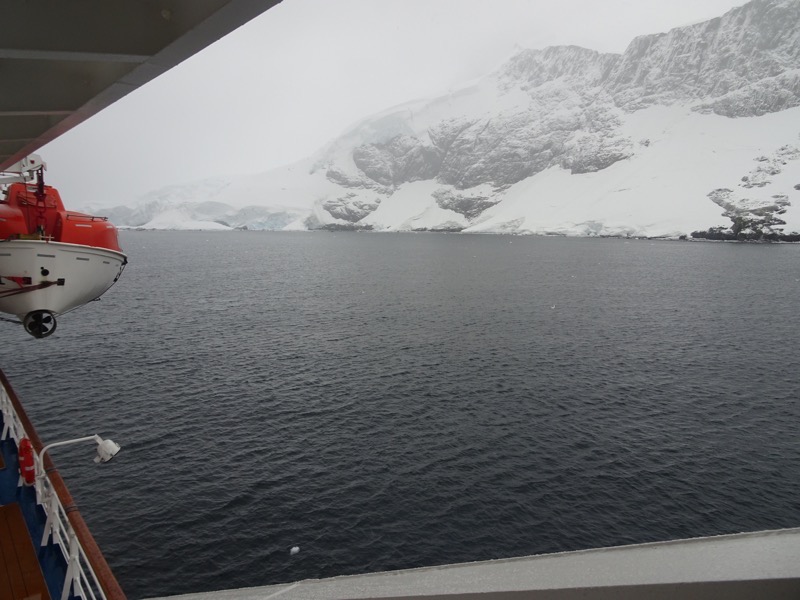

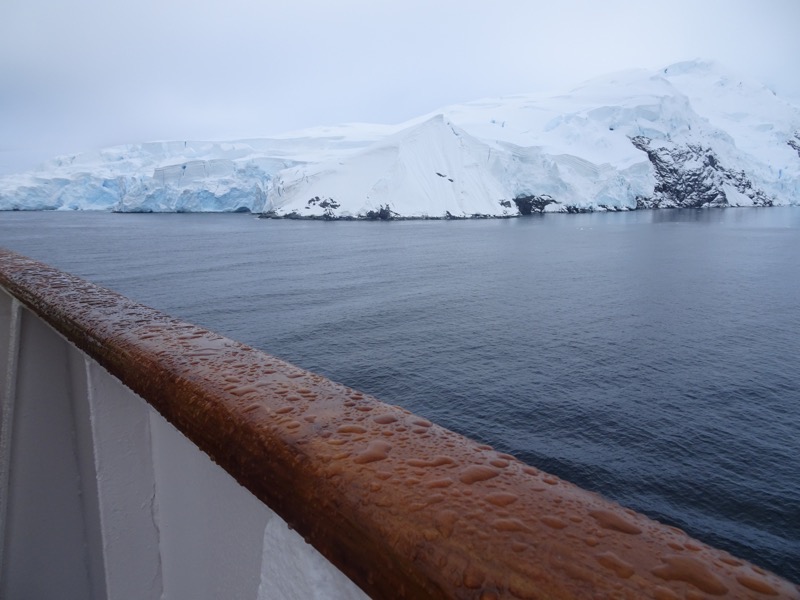



 So… about half an hour after I wrote the above, I went outside to take some photos of the glaciers and ice in Graham Passage (well, look at it – you can’t just look at this amazing landscape through a salt-splattered cabin window!) and the cold air brought on such a huge coughing fit that I have decided to be sensible and *not* go out for a zodiac excursion in Graham Passage. 🙁 It’s still snowing – sideways – and our Expedition Leader, Woody, has just come over the PA suggesting everyone ‘rug up a bit, it’s a bit chilly’… which is rugged and tough Antarctic Expedition Leader for: ‘It’s fucking cold people, don’t make me pull out the emergency blankets because you don’t have enough layers on’.
So… about half an hour after I wrote the above, I went outside to take some photos of the glaciers and ice in Graham Passage (well, look at it – you can’t just look at this amazing landscape through a salt-splattered cabin window!) and the cold air brought on such a huge coughing fit that I have decided to be sensible and *not* go out for a zodiac excursion in Graham Passage. 🙁 It’s still snowing – sideways – and our Expedition Leader, Woody, has just come over the PA suggesting everyone ‘rug up a bit, it’s a bit chilly’… which is rugged and tough Antarctic Expedition Leader for: ‘It’s fucking cold people, don’t make me pull out the emergency blankets because you don’t have enough layers on’.
Instead, Trish and I have spent the morning enjoying the views from the ship and watching some movies on the in-room movie channel in between coughing fits. I’ve rung to see the ship’s doctor primarily just to double check which anti-biotic I should be self-medicating on, and I hope I’m much better tomorrow to get in some more zodiac cruising at Deception Island.
Those of our group who did go out this morning said the bay was very beautiful and there was sea ice forming – it needs to get stupid cold for sea ice to be forming on the surface – but that the whales were not very active, they were just logging this morning so it was a very cold and rather quiet excursion. I’m glad I didn’t miss more leopard seals feeding or a pod or killer whales or something, but not so great every one went out in these conditions and didn’t get to see much.
This afternoon we are heading to Cierve Bay to hopefully try and find a calmer spot to go zodiac cruising. At this stage, I’m unlikely to go – I’m still waiting to see Shannon, the ship’s doctor.
Thankfully just after lunch, Shannon, the ship’s doctor came to see us. She had a listen to my chest and I was so relieved to hear that it was just a virus going around the ship and not the start of some hideous bronchitis thing. She has seen nearly half of the people on the ship with similar symptoms since we all got on board, and most of those that had it at the beginning of the trip are well and truly over it now. She also said that the cold air and being outside wasn’t going to make us any worse so if we go out, so just rest up and have a few early nights.
Woo-hoo! I felt rather relieved. After having bloody bronchial pneumonia knock me on my arse for about 8 weeks in 2015, I am really wary of chesty illnesses. The result of this fortuitous conversation was that I felt better about getting rugged up and going out with the afternoon’s planned zodiac cruising around Cierve Bay.
 A sneaky leopard seal checking out the propellor on our zodiac (damn, where’s my polariser now?!)
A sneaky leopard seal checking out the propellor on our zodiac (damn, where’s my polariser now?!)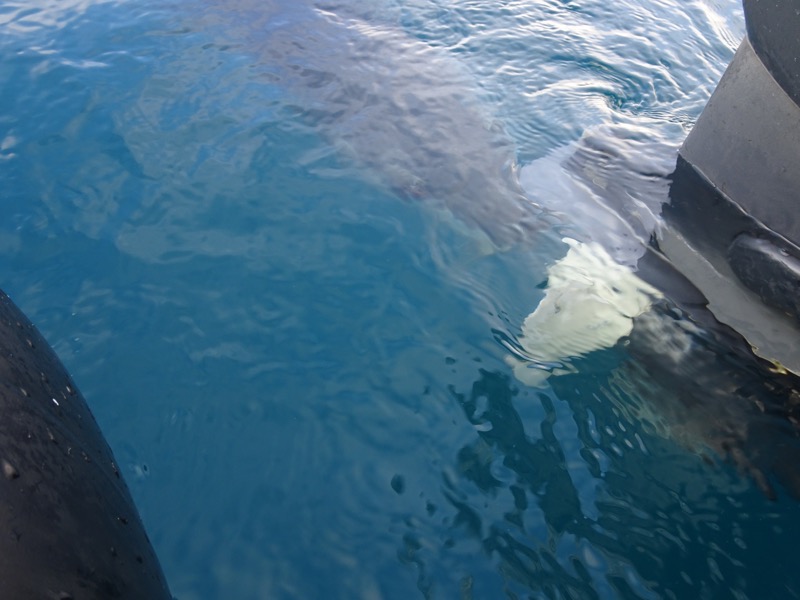


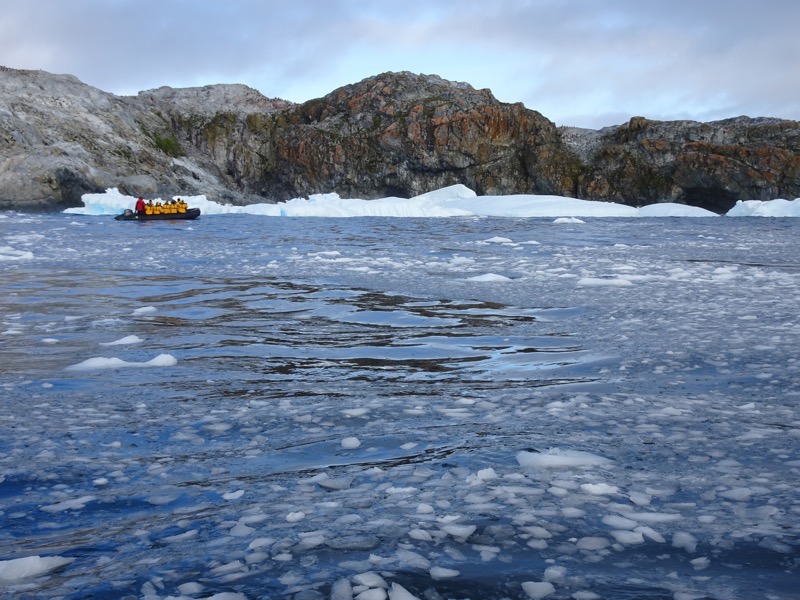 Traversing the brash ice to get into the harbour – I love the sound that it makes as you cut through it in the zodiacs.
Traversing the brash ice to get into the harbour – I love the sound that it makes as you cut through it in the zodiacs.
I am so glad I rugged up and went out… With no real notice the weather had lifted and cleared up completely and we spent a couple of hours riding around in the zodiacs in beautiful blue skies and bright sunshine this afternoon. It was so warm I was unzipping my parka and taking my gloves off to try and cool down. We have really been enjoying the moody and atmospheric conditions that we have had over the last few days of excursions, but now Antarctica showed us a whole different palette of colours.

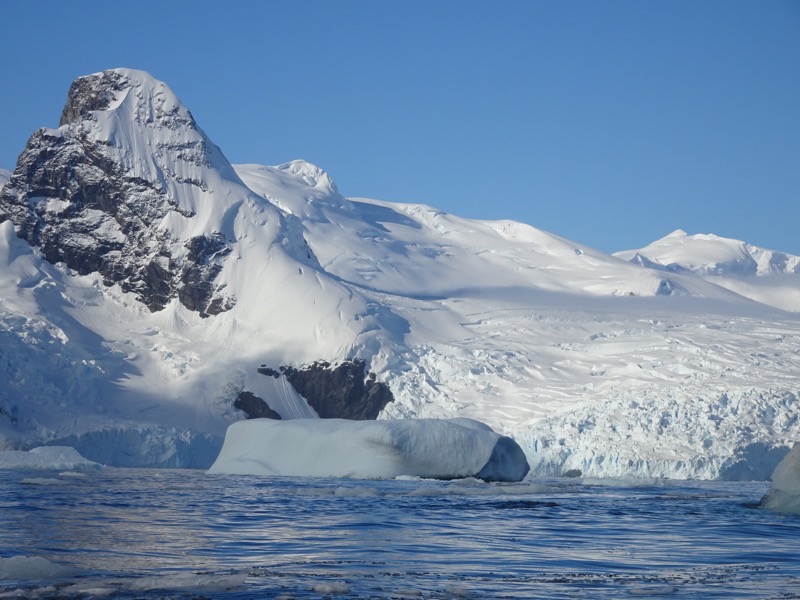

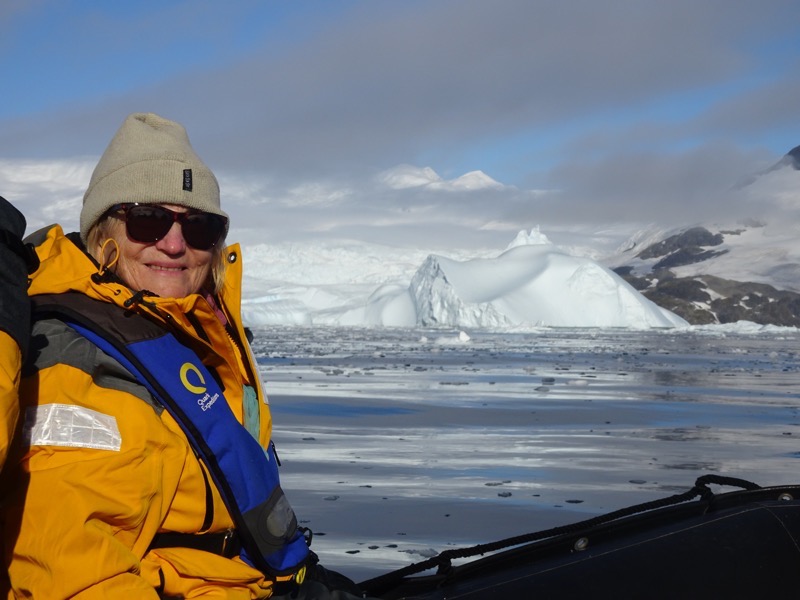 About four gorgeous whales in front of a tidewater glacier.
About four gorgeous whales in front of a tidewater glacier.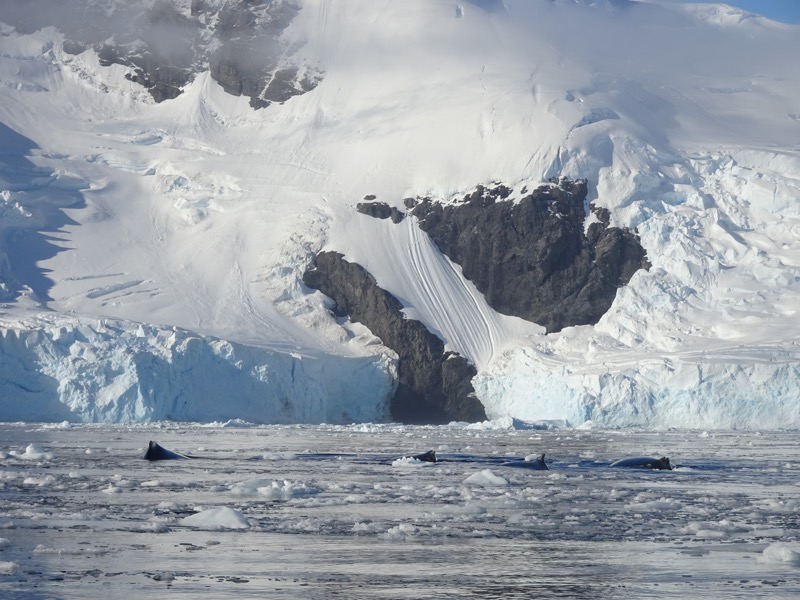
 Not a single one of these photos has been adjusted for brightness, contrast, colour balance or anything. They are straight from the camera and unfiltered and unenhanced. A couple might have had yellow jacket bits cropped out of them – but they are compltely unmanipulated.
Not a single one of these photos has been adjusted for brightness, contrast, colour balance or anything. They are straight from the camera and unfiltered and unenhanced. A couple might have had yellow jacket bits cropped out of them – but they are compltely unmanipulated.


 While earlier we had been lamenting the lack of blue skies somewhat, now that we had some, I was glad for the overcast days leading up to this – everything is so blindingly white and the glare hits you from every direction. The worst of it is you can’t see anything on your camera’s LCD screen – even turned right up, it’s not bright enough to overcome this much ambient light. So every shot you take is pretty much composed blind (so many crooked horizons!). Behind us when we turned into the sun:
While earlier we had been lamenting the lack of blue skies somewhat, now that we had some, I was glad for the overcast days leading up to this – everything is so blindingly white and the glare hits you from every direction. The worst of it is you can’t see anything on your camera’s LCD screen – even turned right up, it’s not bright enough to overcome this much ambient light. So every shot you take is pretty much composed blind (so many crooked horizons!). Behind us when we turned into the sun:
 Getting in amongst the ice.
Getting in amongst the ice. Some Chinstrap penguins blending in with the Gentoo.
Some Chinstrap penguins blending in with the Gentoo.
Crystal clear water, gorgeous blue icebergs and bright snow and clear skies. It was just amazing out there this afternoon. We saw more leopard seals feeding, at one point were surrounded by about a dozen humpback whales, more crab-eater seals and quite a few chinstrap penguins. The guides here are incredible and you would think they would be used to this place, but every day we have gone out with them they have seemed as full of amazement as we are. This afternoon our guide, Naomi, was so overcome she literally had tears in her eyes when a humpback whale emerged from the dark water right beside our zodiac. He was so huge and so calm and majestic, and so close I swear you could have reached out to touch him. We have seen so many whales this trip, and the guides have been telling us that on many trips, people are lucky to see one whale, and there we were this afternoon surrounded by about fifteen whales and not knowing which way to look, in the hope of seeing their elegant tails as they dived down to feed.
Chinstrap photo by Arthur:  Photo by Linda:
Photo by Linda: Linda again:
Linda again: Couple of pics from Arthur:
Couple of pics from Arthur: Poor little penguin! Nasty ol’ leopard seal.
Poor little penguin! Nasty ol’ leopard seal. Gulp feeding. Photo by Jandoc:
Gulp feeding. Photo by Jandoc: Photo by Leonardo (Lyn, Mum, Trish and I are in the zodiac pictured!):
Photo by Leonardo (Lyn, Mum, Trish and I are in the zodiac pictured!):

We saw some rather rare phenomena today – a large truck sized iceberg rolled right in front of us. The sun comes out for even just a short time and it will accelerate the melting of an iceberg and with that melting comes a destabilizing effect that causes the iceberg to roll to regain ‘balance’ on the water. We saw a chunk fall off an iceberg and then saw as it rolled and rolled until it seemingly lumbered its way to a new resting position.

I am so glad I went out this afternoon.

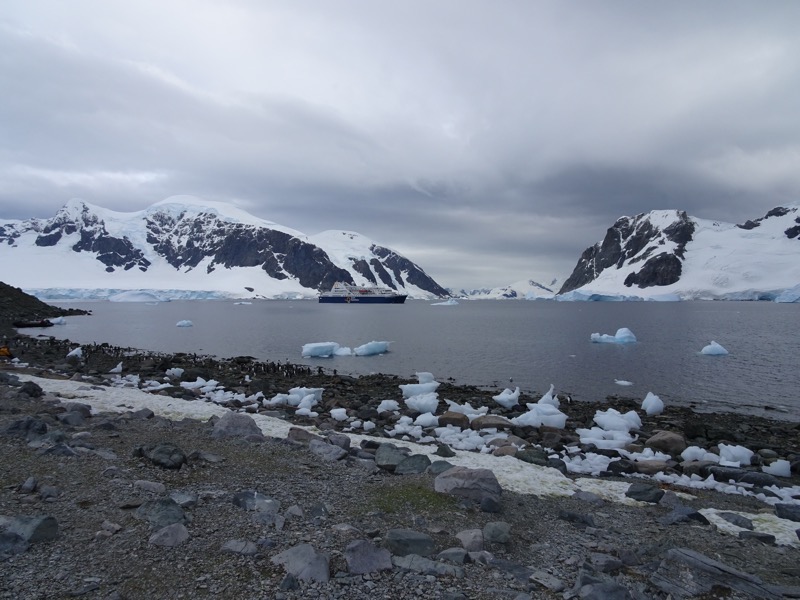


 More little juveniles learning to swim – they are so funny to watch, hopping in, falling about and hopping straight out again. The more time we spend with the penguins, the more character and personality we seem to be attributing to them.
More little juveniles learning to swim – they are so funny to watch, hopping in, falling about and hopping straight out again. The more time we spend with the penguins, the more character and personality we seem to be attributing to them. Yep, that’ll keep you warm…
Yep, that’ll keep you warm…


 What you looking at?
What you looking at? Hey!
Hey! Run, Gentoo! Run!
Run, Gentoo! Run! Photo by Arthur:
Photo by Arthur:


 Driving the zodiac through the brash ice is a strange feeling, a bit like scraping along a sandbar for ages.
Driving the zodiac through the brash ice is a strange feeling, a bit like scraping along a sandbar for ages.

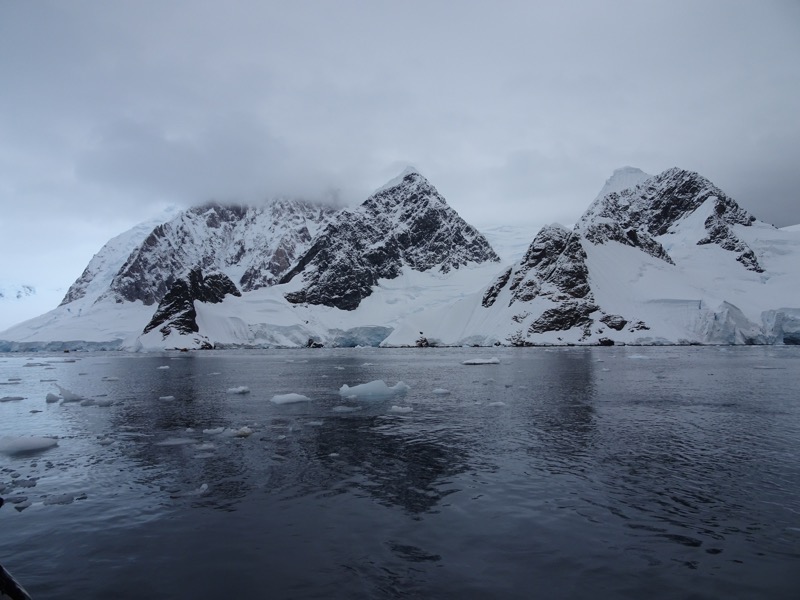 Most of the whales we met this morning were just lolling about logging. It seems they tend to be more active in the afternoons when they are awake and feeding more. We saw some other wildlife this morning – mostly birds and a few crabeater seals.
Most of the whales we met this morning were just lolling about logging. It seems they tend to be more active in the afternoons when they are awake and feeding more. We saw some other wildlife this morning – mostly birds and a few crabeater seals.
 Photo by Arthur:
Photo by Arthur: Photo by Jayn:
Photo by Jayn: Photo by Arthur:
Photo by Arthur: And of course, more beautiful icebergs.
And of course, more beautiful icebergs.



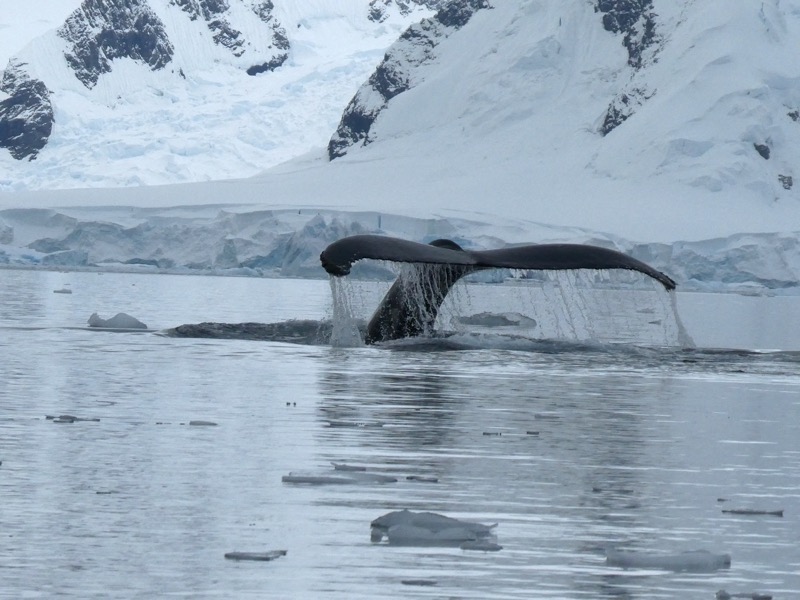








 Uncredited, unfortunately, I assume one of the kayak guides took it:
Uncredited, unfortunately, I assume one of the kayak guides took it: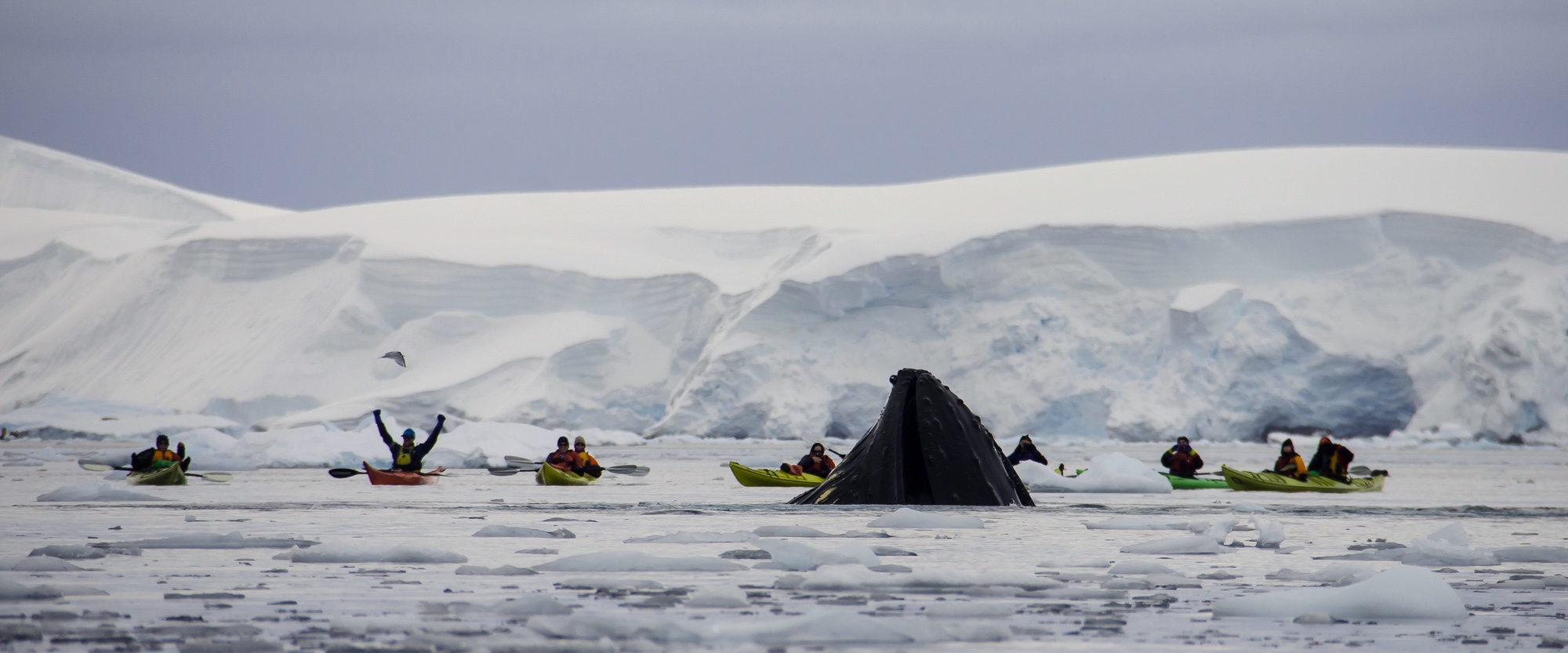 Photo by Leanne:
Photo by Leanne: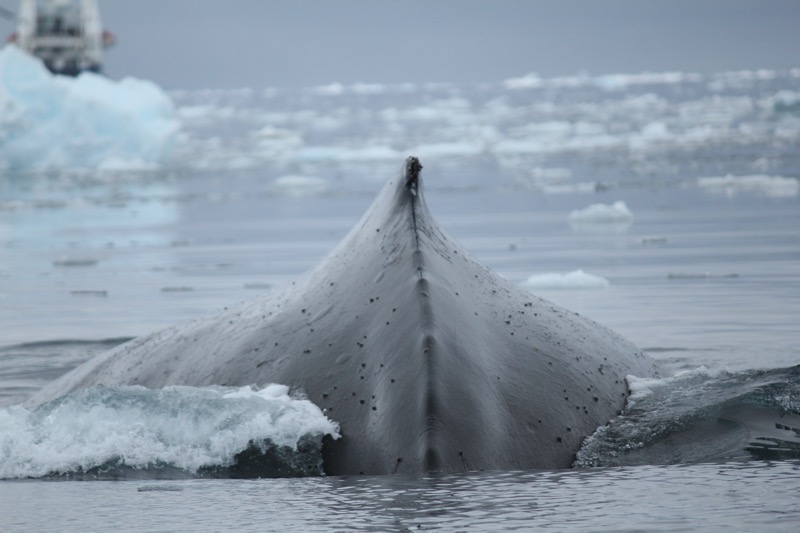 Photo by Leane:
Photo by Leane: Back to the ship and it was very shortly time for our debrief/recap and then onto a BBQ on the back deck for an evening of dining al fresco! Yep, no shit – Gunter, our head chef and his entire team cooked up a storm out on the open decks and we had a crazy hat party.
Back to the ship and it was very shortly time for our debrief/recap and then onto a BBQ on the back deck for an evening of dining al fresco! Yep, no shit – Gunter, our head chef and his entire team cooked up a storm out on the open decks and we had a crazy hat party.

 Happy Birthday Mum! <3
Happy Birthday Mum! <3  Alex, our Ukrainian Maitre D’ and some of his servers came and sung Happy Birthday.
Alex, our Ukrainian Maitre D’ and some of his servers came and sung Happy Birthday.

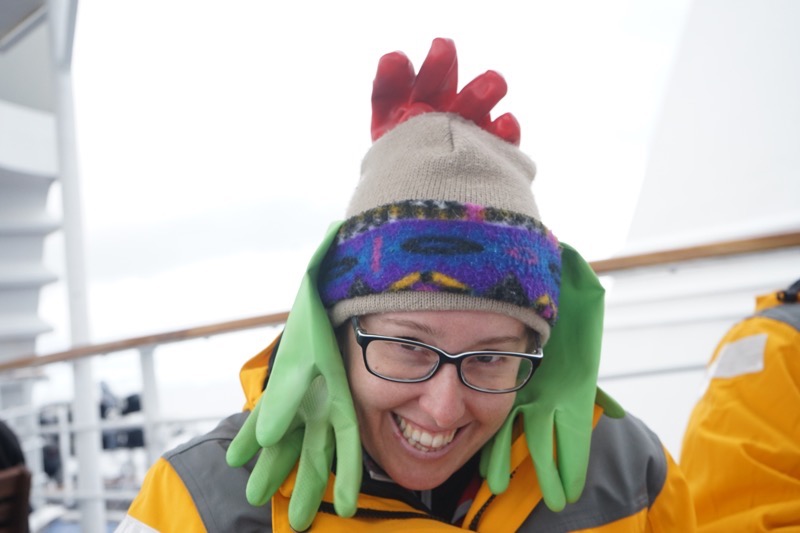


 A great finish to another excellent day in Antarctica. I’m loving this voyage – it’s simply unbelievable.
A great finish to another excellent day in Antarctica. I’m loving this voyage – it’s simply unbelievable.




 The Bridge has many pairs of binoculars so guests can bird watch, or look for wildlife or even ice bergs. There are also books in here for bird identification and maps of the Antarctic Peninsula.
The Bridge has many pairs of binoculars so guests can bird watch, or look for wildlife or even ice bergs. There are also books in here for bird identification and maps of the Antarctic Peninsula.

 It turns out for those marine biology challenged amongst us that a pinniped is a seal – or a finned, feather-footed marine mammal. Marine mammals are those that derive most of their nutrition from marine environments. For the sake of simplicity, they are effectively the eared and earless seals or Phocidae and Otariidae.
It turns out for those marine biology challenged amongst us that a pinniped is a seal – or a finned, feather-footed marine mammal. Marine mammals are those that derive most of their nutrition from marine environments. For the sake of simplicity, they are effectively the eared and earless seals or Phocidae and Otariidae. After breakfast, we had another briefing, this time about the delicate Antarctic environment and the
After breakfast, we had another briefing, this time about the delicate Antarctic environment and the 
 One of these measures involves getting passengers to have any garments or backpacks or walking poles that will be used on the Peninsula checked by the Expedition Team for seeds, soil or plant matter. Basically, anything that was not purchased brand new for this trip that we were planning on taking with us when we left the ship on excursions (particularly outer layer garments), had to be checked by staff. The staff had set up vacuuming stations on each level of the ship and passengers were called through to have their backpacks and garments inspected and vacuumed for minute particles. Additionally, a washing station was set up on the lower decks to have walking poles, tripods and monopods scrubbed in disinfectant. The Expedition Team impressed upon us how seriously they take this responsibility, and the biosecurity checking took a number of hours as they called passengers from each deck to vacuum and check our things.
One of these measures involves getting passengers to have any garments or backpacks or walking poles that will be used on the Peninsula checked by the Expedition Team for seeds, soil or plant matter. Basically, anything that was not purchased brand new for this trip that we were planning on taking with us when we left the ship on excursions (particularly outer layer garments), had to be checked by staff. The staff had set up vacuuming stations on each level of the ship and passengers were called through to have their backpacks and garments inspected and vacuumed for minute particles. Additionally, a washing station was set up on the lower decks to have walking poles, tripods and monopods scrubbed in disinfectant. The Expedition Team impressed upon us how seriously they take this responsibility, and the biosecurity checking took a number of hours as they called passengers from each deck to vacuum and check our things.
 Our fearless Expedition Leader, David Wood (‘Woody’, yes of course he’s Australian) would come to call this sort of weather, ‘romantic’ or ‘dramatic’… with him there was no such things as ‘good’ or ‘bad’ weather.
Our fearless Expedition Leader, David Wood (‘Woody’, yes of course he’s Australian) would come to call this sort of weather, ‘romantic’ or ‘dramatic’… with him there was no such things as ‘good’ or ‘bad’ weather.
 There are many seabirds prevalent in these convergence regions from Great Albatross, Grey Albatross, Great Southern Royal Albatross (enormous birds with a wingspan of 3m) down to smaller petrels, cormorants and terns. Too many to list here. The most interesting thing I learned about any of these seabirds during this lecture is they tend to spend most of their life in flight – and that they actually expend more energy when being on the surface of the water than when gliding in the air over the water’s surface. It turns out that these birds (and some seals too) are capable of
There are many seabirds prevalent in these convergence regions from Great Albatross, Grey Albatross, Great Southern Royal Albatross (enormous birds with a wingspan of 3m) down to smaller petrels, cormorants and terns. Too many to list here. The most interesting thing I learned about any of these seabirds during this lecture is they tend to spend most of their life in flight – and that they actually expend more energy when being on the surface of the water than when gliding in the air over the water’s surface. It turns out that these birds (and some seals too) are capable of 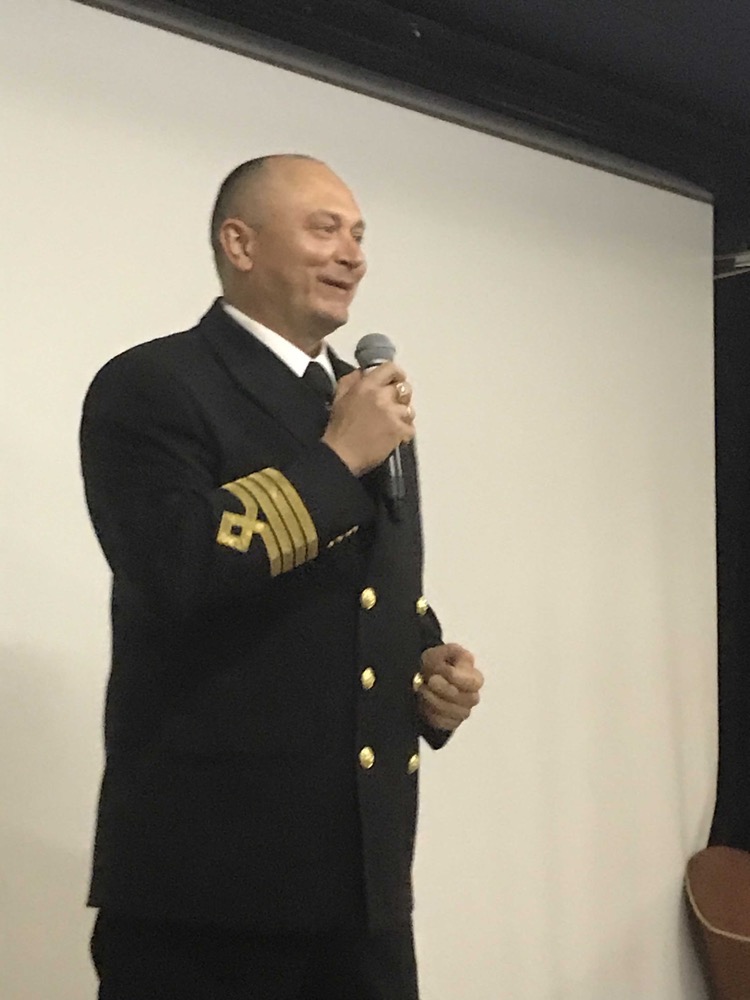 At 1800 we had our Daily Recap and Briefing in the Main Lounge which apparently will happen every day to go over the things we saw each day and to give a brief overview of what to expect the next day.
At 1800 we had our Daily Recap and Briefing in the Main Lounge which apparently will happen every day to go over the things we saw each day and to give a brief overview of what to expect the next day.

